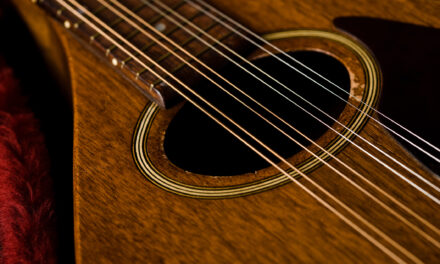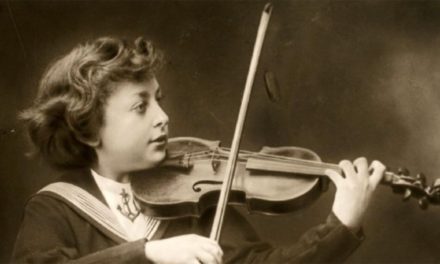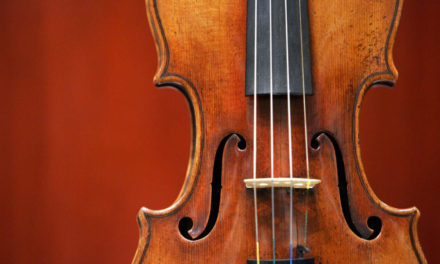When we started learning a new thing, it is natural to make mistakes, we all need to learn from mistakes and improve, but it is important to not let the errors become habit. The same rule apply to violin and viola playing as well, and more so, unlike many other instruments that you can probably teach yourself, violin is always recommended to learn from a professional teacher at the very beginning, because once you develop a bad habit when first started, it is so difficult to revise later, so it is essential to start right.
We’ve listed 8 most common mistakes a beginner violinist may make, check them out and see if you are making one of those, if you do, make a vow to ban these bad habits from your practice.
1. Poor Gesture
Your hands and arms are not the only parts of your body that are involved in your playing; your back plays a very important role, too. Your back muscles provide the support and strength your arms need to play. You depend on those muscles to pick up your violin and do what you love.
That is why proper posture is so important. Back problems can quickly go from a temporary injury (such as pulling a muscle) to a permanent problem (like scoliosis or other deformations). If you develop these conditions it can – and probably will – keep you from playing the violin. Therefore, take care of yourself in order to be the artist you want to be!
2. Elbow Room
Many violinists, and musicians in general, tend to get tired the longer they play. If you pay attention to your elbow, it’ll start out in the proper form only to creep closer to your body the longer you play. You should always be holding your elbow away from you so your violin is held in the right position. If your arms get tired, there’s nothing shameful about taking a quick break to loosen up your muscles. After all, holding your violin in the proper position is more important than being able to play the violin for two hours in a row without a break, at least in the very beginning. Over time, you’ll build up strength and be able to hold your elbows up for longer periods of time.
3. Using Tapes On The Fingerboard
Like a lot of practice aids, moderation is an important concept. Using tapes on the fingerboard of a violin year after year, with no variation in terms of position or context, tends to nullify pitch recognition and other subtle cognitive functions. For very early beginners, and to learn shifting, they can serve a purpose. Using tapes on the violin bow can be very useful, provided there are clear goals set, and the tapes are reflective of bow stroke vocabulary.
4. Ignoring Technical Application
Repetition does have it’s place, but one can also run the risk of repeating the same mistake over and over again, creating a kind of battle within ones own playing experience. Playing the violin is an enormously complex and subtle endeavor. The information available at our immediate disposal is infinite, and ever growing. Internet, easier travel, better understanding of technical application are all a part of the times we live in. Learning to discriminate as to what is or isn’t a good fit for you, is a necessary part of the relationship you create between you and your instrument.
5. Not Warming Up
You know how in P.E. class you have to do jumping jacks and stretches before you start playing basketball or head to the track field to run a mile? The same logic should be applied to playing the violin–after all, if you don’t do proper warm-up exercises before playing the violin, your muscles won’t be prepared and your practicing won’t be as productive. Your body is your most immediate instrument, and your violin is just an extension of it. If you aren’t taking care of your body, and preparing it for what’s to come via specially designed warm-up exercises, you won’t be able to successfully practice and play.
6. Bow Issues
Do the notes sound choppier than they should? Are you aiming for a nice, smooth sound but falling short? If your violin sounds rough, you might want to take a look at how you’re bowing. Learning how to use the bow can be difficult for many violinists, and new musicians tend to attack the strings with their bow instead of letting it gracefully slide over the strings. The former will produce choppy, disconnected sounds, while the latter will produce a more fluid, musical tone. If you don’t already include bowing exercises in your practice routine, make sure to do so–this way, you can master the motions you need in order to get the desired tone from your violin.
7. Over-Practice
We all know that feeling when we finally start to get a passage right. Although your fingers are learning it, and your brain understands it; it’s not quite solid. So you think to yourself, “Just five more minutes; that’s all that I need to get it right.”
Well, as long as it is just five minutes, then go for it. But if after that time the passage is still not there, stop playing. Your body and mind have a limit, and if you push them too far, there will be no improvement. You will be playing in what I like to call “automatic mode.” In other words, you will not be thinking nor paying attention, and you will run the risk of getting an injury.
Reference:
https://takelessons.com/blog/violin-mistakes-practice-z08
http://www.violinist.com/blog/violinseeds/20097/10295/





